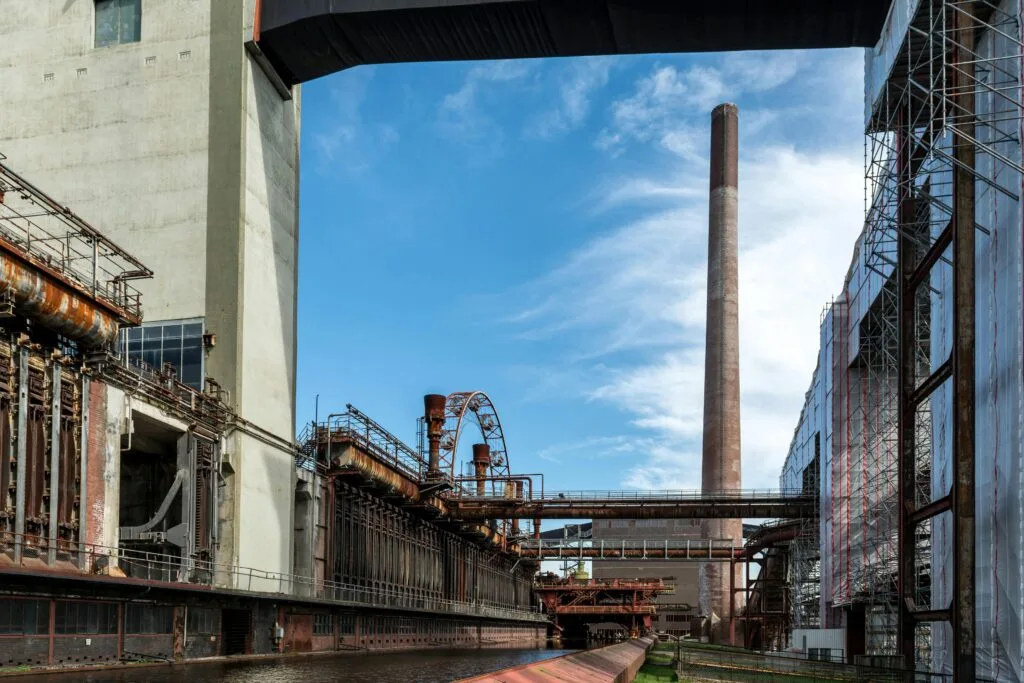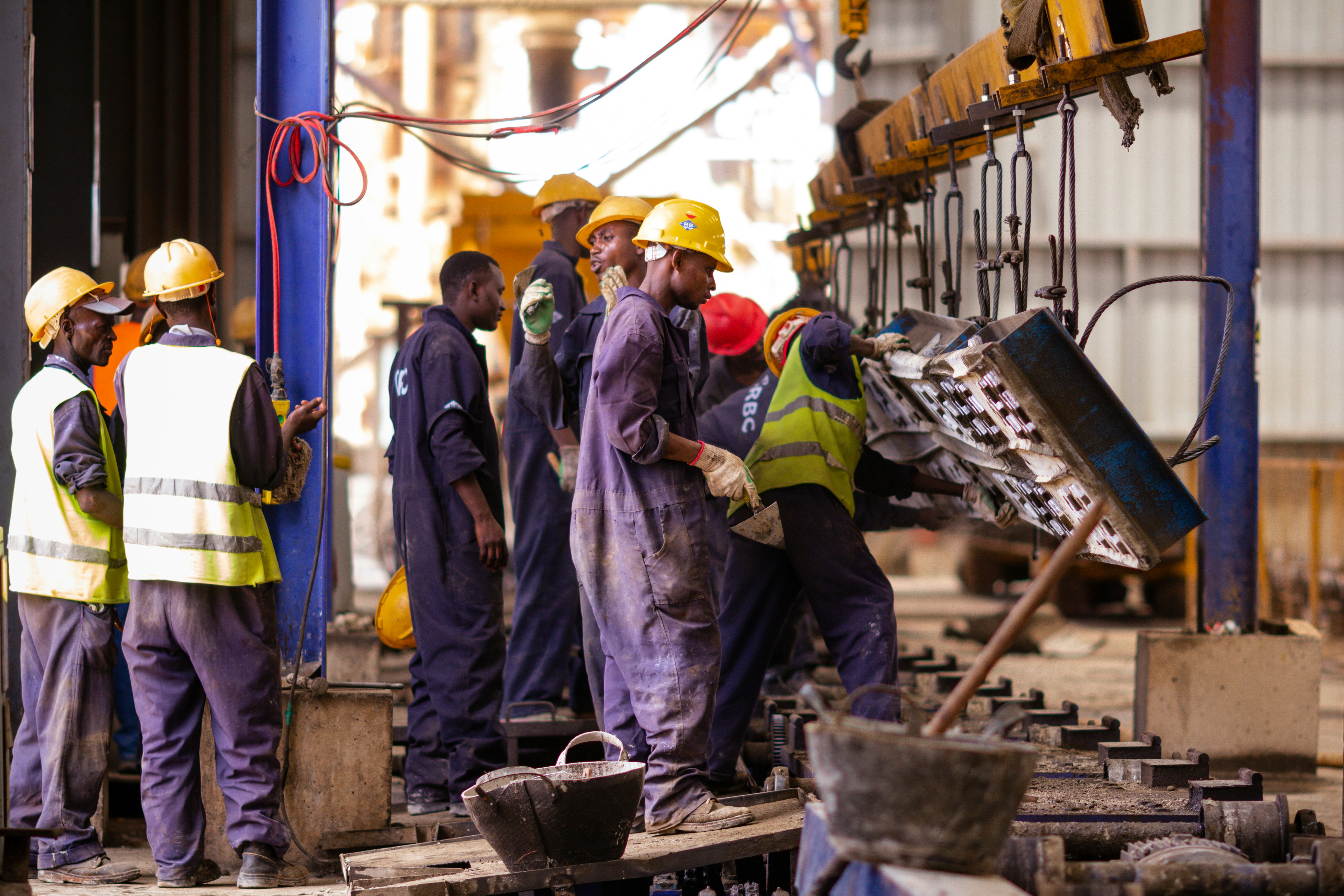Introduction to Industrial Parks
Industrial parks are designated areas specifically designed to host various industrial facilities, such as manufacturing units, warehouses, and distribution centers. Their primary purpose is to provide a conducive environment for businesses to operate efficiently, ultimately leading to enhanced productivity and economic growth. The structure of industrial parks typically includes several key components, such as infrastructure, utilities, and transportation links, which collectively facilitate the seamless functioning of industries within these zones.
The significance of industrial parks in regional economic development cannot be overstated. They serve as catalysts for industrialization, attracting both local and foreign investments. By consolidating businesses in a single location, industrial parks enable economies of scale, fostering collaborations among companies and enhancing supply chain efficiencies. Furthermore, they play a vital role in job creation, consequently improving the living standards of the workforce in the surrounding communities.
In the context of the MENA region, industrial parks have emerged as critical drivers of economic diversification and growth. Several countries within this geographic area have recognized the imperative for sustainable industrial development, particularly in the wake of fluctuating oil prices and the need to reduce dependency on hydrocarbons. As governments adopt strategic policies to promote industrialization, industrial parks are being strategically developed to cater to specific sectors such as manufacturing, technology, and logistics.
These initiatives not only aim to boost regional competitiveness but also seek to incorporate innovation and technology into traditional industries. By providing a framework for collaboration and knowledge sharing among businesses, industrial parks contribute significantly to the overall economic landscape of the MENA region, positioning it as a hub for entrepreneurial activities and advanced manufacturing.
Historical Context and Evolution in the MENA Region
The establishment of industrial parks in the MENA (Middle East and North Africa) region can be traced back to significant economic and political transformations that occurred during the late 20th century. The roots of these developments can be linked to various factors, including globalization, economic reforms, and government initiatives aimed at spurring industrialization.
In the 1980s and 1990s, many MENA countries began to experience economic challenges characterized by fluctuating oil prices and the need for diversification beyond oil dependency. Governments recognized that fostering industrial development was essential to create resilient economies capable of withstanding external shocks. Consequently, officials initiated a series of economic reforms that included deregulation, privatization, and the creation of a favorable investment climate.
The globalization phenomenon also played a crucial role in shaping industrial parks in the MENA region. As global markets became increasingly interconnected, MENA governments sought to attract foreign investment. Industrial parks became strategically important as they offered attractive incentives for both local and international businesses. These zones typically included infrastructure support, including transportation and utilities, which facilitated access to markets and resources.
Furthermore, the goal of enhancing competitiveness within the global marketplace propelled the establishment of industrial parks. By clustering industries in designated areas, governments aimed to achieve economies of scale and promote collaboration among firms, leading to efficiencies in production and distribution.
Throughout the 2000s, many MENA countries successfully established various industrial parks, particularly in Egypt, Jordan, and the Gulf States. These parks evolved into hubs of manufacturing, technology, and services, promoting employment opportunities and contributing to regional economic development. The historical context surrounding these developments underscores the vital role of industrial parks in addressing economic challenges and embracing a new era of industrialization in the MENA region.
Economic Benefits of Industrial Parks
Industrial parks serve as a significant catalyst for economic development in the MENA region, offering a myriad of advantages that extend beyond mere infrastructure. One of the foremost benefits is job creation; these parks attract numerous businesses, leading to increased employment opportunities for local populations. As diverse industries establish their operations within these premises, they rely on a local workforce, thus stimulating not only employment but also enhancing the skills and capacities of the labor pool.
Moreover, industrial parks play a pivotal role in attracting foreign direct investment (FDI). By providing a conducive environment for businesses to thrive through incentives such as tax exemptions and streamlined regulations, these parks can draw international corporations looking to expand their footprint. The influx of FDI not only boosts capital inflow but also serves to modernize local industries, infusing them with new technologies and practices that can significantly enhance productivity.
Increased productivity is another critical benefit associated with the establishment of industrial parks. By clustering similar industries in a concentrated area, businesses can optimize their supply chains, share resources, and foster innovation through collaboration. This efficiency leads to reduced operational costs and enhanced competitiveness for local companies in both domestic and international markets.
Furthermore, industrial parks promote the growth of small and medium enterprises (SMEs), which are integral to the economy of the MENA region. By facilitating access to resources, networks, and mentorship, these parks create a nurturing environment where SMEs can flourish. This support is essential for diversifying the economy and reducing dependency on traditional sectors such as oil and gas.
Ultimately, the establishment and development of industrial parks within the MENA region demonstrate a holistic approach to industrialization that emphasizes sustainability, resilience, and economic diversification. Through job creation, the attraction of FDI, heightened productivity, and empowerment of SMEs, industrial parks are paving the way for a robust economic future.
Environmental Considerations and Sustainability Challenges
The establishment and development of industrial parks in the MENA region have raised significant environmental considerations that warrant thorough examination. As these parks expand, concerns related to land use, pollution, and resource consumption become increasingly pronounced. One of the primary environmental impacts arises from the conversion of natural landscapes into industrial zones, inevitably leading to habitat loss and alterations in local ecosystems. This transition often disrupts biodiversity and can adversely impact wildlife populations, necessitating careful planning and impact assessments prior to development.
Pollution is another critical issue associated with industrial parks. These areas typically host numerous manufacturing facilities, which can contribute to air, water, and soil pollutants. Industries may discharge harmful emissions, including volatile organic compounds (VOCs) and particulate matter, that compromise air quality and pose health risks to nearby communities. Moreover, water bodies can become contaminated through industrial runoff, creating serious implications for both aquatic life and local populations relying on these resources. Addressing these challenges is essential for fostering a healthier environment.
Resource consumption in industrial parks is also a cause for concern. The demand for water and energy in these facilities often leads to unsustainable practices, particularly in a region where water scarcity is prevalent. To mitigate these issues, many industrial parks are exploring and implementing sustainable practices aimed at minimizing their environmental footprint. This includes adopting renewable energy sources, implementing waste reduction processes, and enhancing water management systems to promote efficiency. Moreover, some parks incorporate green spaces and sustainable infrastructure to improve their overall environmental impact.
For the MENA region’s industrial parks to thrive sustainably, ongoing efforts to balance economic development with ecological responsibility are essential. Stakeholders must collaborate on strategies that promote sustainable practices without compromising productivity, ensuring a dual focus on industrial growth and environmental preservation.
Social Impacts and Community Development
The establishment of industrial parks in the MENA region has been transformative in reshaping local communities and their social structures. These industrial hubs often serve as catalysts for economic growth, generating employment opportunities and advancing infrastructure development. The influx of industries creates jobs that not only alleviate poverty but also enhance the standard of living for many residents. However, it is essential to examine both the positive impacts and the challenges that arise within these communities.
One significant aspect of social impact relates to worker’s rights. As industrial parks grow, they frequently attract a diverse workforce, leading to an increased demand for skilled labor. Consequently, there arises a pressing need for adequate labor laws and regulations. Many industrial park management teams implement labor standards aimed at safeguarding workers’ rights, ensuring fair wages and safe working conditions. Nonetheless, varied enforcement of these regulations can lead to discrepancies in worker treatment, highlighting the need for ongoing vigilance by government entities and non-governmental organizations.
The industrial landscape also influences gender dynamics within the workforce. Industrial parks can empower women by providing employment opportunities that were previously limited. Many initiatives are directed at supporting women’s employment, which can lead to increased gender equality in the labor market. However, traditional cultural norms often pose challenges, necessitating targeted outreach and educational programs to promote women’s participation in various industries.
Additionally, industrial parks often engage in social responsibility initiatives aimed at fostering sustainable community development. Programs that support local education, health, and environmental sustainability not only enhance the existing social infrastructure but also cultivate positive relations with surrounding communities. By prioritizing socially responsible practices, industrial parks can significantly contribute to the overarching development goals within the MENA region, ensuring that local communities benefit holistically from industrialization.
Regional Case Studies: Success Stories and Lessons Learned
The MENA region boasts various successful industrial parks that demonstrate the effectiveness of strategic planning and implementation in enhancing economic growth. A notable case is the Jebel Ali Free Zone in the United Arab Emirates, which has transformed the nation into a global trade hub. Established in 1985, this industrial park serves over 7,000 companies and contributes significantly to the UAE’s GDP. The key to its success lies in its strategic location, excellent infrastructure, and the provision of various incentives, such as tax exemptions and a liberal regulatory framework. These strategies have effectively attracted both local and foreign investments.
Another exemplary industrial park is the King Abdullah II Industrial City in Jordan. Launched in 2001, it has become a focal point for the manufacturing sector, particularly in textiles and clothing. The park faced initial challenges, including limited infrastructure and resources. However, the Jordanian government’s commitment to improving connectivity and access to markets, coupled with public-private partnerships, helped overcome these hurdles. The lessons learned from King Abdullah II Industrial City emphasize the importance of collaboration between public bodies and private investors in creating a conducive environment for industrial development.
In Tunisia, the Bizerte Industrial Park illustrates a successful approach to attracting technology-based firms. Since its inception, it has focused on sectors such as electronics and information technology. The park’s management implemented tailored training programs for the workforce, addressing skill gaps and enhancing productivity. One of the vital takeaways from this case is the need for continual investment in human capital to support the evolving demands of industries.
These case studies collectively showcase that while challenges exist, strategic planning, investment in infrastructure, and a skilled workforce are pivotal in ensuring that industrial parks in the MENA region contribute effectively to economic development. The insights derived from these successes can guide future endeavors in industrial park development across the region.
Government Policies and Regulations Supporting Industrial Parks
The development of industrial parks in the MENA region is significantly influenced by government policies and regulatory frameworks. Governments across MENA countries have recognized the potential of industrial parks to drive economic growth, attract foreign investment, and create employment opportunities. Consequently, a myriad of supportive policies has been established to enhance the operational environment for these parks.
One of the primary objectives of these policies is to promote investment in infrastructure and technology within industrial parks. Governments offer incentives such as tax exemptions, subsidies, and streamlined processes for obtaining permits, which reduce operational costs and encourage businesses to set up in these zones. For example, many MENA countries have established special economic zones with dedicated regulations designed to attract high-tech industries. These incentives not only draw local businesses but also entice multinational corporations to invest in the region.
Furthermore, the regulatory frameworks often include provisions for public-private partnerships (PPPs), allowing for collaboration between government entities and private investors. This approach has proven beneficial in mobilizing resources and expertise, leading to the efficient development of industrial parks. Additionally, regulations designed to ensure environmental sustainability are increasingly integrated into industrial park frameworks, reflecting a global trend towards more responsible industrialization practices. By embedding sustainability requirements, governments aim to attract companies that prioritize eco-friendly practices.
Moreover, local governments play a crucial role by providing support mechanisms, including technical assistance and access to training programs for the workforce. These initiatives are essential for enhancing the skill sets of employees within industrial parks, fostering innovation, and ensuring that local talent meets industry demands. In summary, the combination of favorable regulations, financial incentives, and support services positions MENA countries favorably in a competitive global market, thus contributing to the sustained growth of industrial parks throughout the region.
Future Trends and Prospects for Industrial Parks in the MENA Region
The landscape of industrial parks in the MENA region is rapidly evolving, with several notable trends poised to shape their future. One of the most significant developments is the integration of technological advancements, particularly in the realm of digitalization and automation. As countries increasingly adopt Industry 4.0 principles, industrial parks are likely to become hubs of innovation, integrating smart technologies that enhance productivity and improve operational efficiency. Sensors, the Internet of Things (IoT), and artificial intelligence are set to become commonplace within these infrastructures, enabling businesses to respond swiftly to market demands and optimize supply chains.
In addition, the global emphasis on sustainability is prompting a shift towards green industries. This trend is particularly prevalent as the MENA region seeks to diversify its economies and reduce reliance on fossil fuels. Industrial parks are expected to embrace eco-friendly practices, including renewable energy adoption, waste reduction initiatives, and the promotion of circular economy principles. As a result, companies located within these parks may be more inclined to pursue sustainable manufacturing processes, aligning with both regional economic goals and global environmental standards.
However, the future of industrial parks in the MENA region is not without its challenges. Economic volatility, exacerbated by geopolitical tensions, may hinder investment in these infrastructures. Additionally, regional disparities in policy implementation and regulatory frameworks can complicate the establishment of cohesive and effective industrial zones. Despite these challenges, the potential for transformation remains high. With the right strategies and investments, the MENA region can leverage its industrial parks to foster innovation, sustainability, and economic resilience, positioning itself competitively on the global stage.
Conclusion and Recommendations
The MENA region’s industrial parks have become pivotal in fostering economic development and attracting foreign direct investment. Throughout this discussion, it has been evident that while these parks contribute significantly to job creation and technological advancements, they also present certain challenges that need to be addressed. The importance of balancing economic growth with environmental sustainability and social welfare cannot be overstated. As industrial parks flourish, they must integrate strategies that prioritize ecological conservation and respect for local communities.
To enhance the effectiveness and sustainability of industrial parks in the MENA region, several recommendations can be made for stakeholders involved in their development and management. Firstly, it is crucial to implement robust environmental regulations that ensure industries within these parks adhere to sustainable practices. This may include the adoption of cleaner technologies and waste management systems that minimize the carbon footprint. By doing so, industrial parks can position themselves as leaders in green innovation while contributing to the region’s overall environmental goals.
Secondly, engaging with local communities and stakeholders is essential for the long-term viability of industrial parks. Providing opportunities for community involvement in decision-making processes can lead to better understanding and cooperation, ultimately fostering goodwill. Creating local mentorship and training programs can also empower residents, ensuring that the workforce is prepared for the demands of new industries entering the parks.
Lastly, it would be prudent for policymakers to develop a comprehensive framework that aligns the objectives of industrial parks with broader national economic strategies. By considering social and environmental impacts alongside economic gains, the MENA region can ensure that its industrial parks promote sustainable development while fueling economic prosperity. Emphasizing these recommendations will facilitate a future where industrial parks serve as drivers of sustainable growth in the MENA region.


